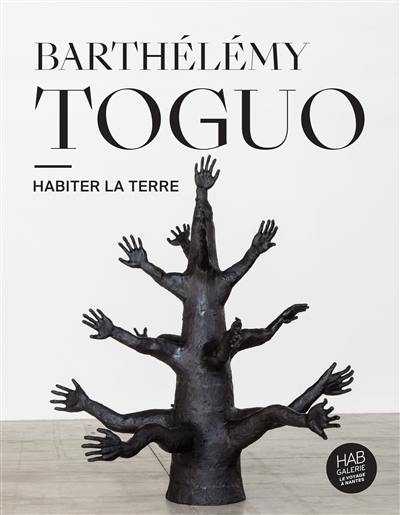
Fiche technique
Format : Broché
Nb de pages : 79 pages
Poids : 205 g
Dimensions : 18cm X 23cm
ISBN : 979-10-93572-92-5
EAN : 9791093572925
Barthélémy Toguo
habiter la Terre
Quatrième de couverture
Barthélémy Toguo, artiste profondément politique dans sa démarche, est pleinement conscient que nous vivons des temps troubles, de division et de partition. Son œuvre, marquée par l'histoire et la mémoire, est traversée par les questions les plus brûlantes qui hantent le monde contemporain : exil et migration, injustice sociale, racisme et discrimination, crise environnementale... Réunissant des vues d'exposition, des textes sur les œuvres et un entretien avec l'artiste, ce carnet revient sur l'exposition personnelle Habiter la Terre, qui présente la diversité des médiums utilisés par Barthélémy Toguo pour se relier de façon organique et faire rhizome dans le vaste espace de la HAB Galerie.
Situé à la pointe ouest de l'île de Nantes, le Hangar 21 est plus connu sous le nom de Hangar à bananes, un surnom qu'il tient de son histoire. En 2007, propriété du port autonome de Nantes Saint-Nazaire, il est réhabilité à l'occasion de la première édition de l'événement biennal Estuaire Nantes <> Saint-Nazaire. Depuis, cet espace rebaptisé HAB Galerie par Le Voyage à Nantes en 2011 propose tout au long de l'année des expositions d'art contemporain qui sont l'occasion d'une plongée inédite dans l'œuvre d'un artiste, vidéo, sculpture, peinture ou installation, pensée et réalisée in situ.
Barthélémy Toguo's approach as an artist is profoundly political. He is keenly aware that we live in troubled times of division and segregation. His work, marked by history and memory, is permeated with the most burning questions haunting the contemporary world : exile and migration, social injustice, racism and discrimination, and environmental crises... Bringing together images of the exhibition, and texts on the artworks, and an interview with the artist, this booklet reviews the solo exhibition, Habiter la Terre (Living on Earth), which presents the plethora of mediums used by Barthélémy Toguo to make organic connections and create rhizomes in the vast space of the HAB Gallery.
Located at the western tip of the Ile de Nantes, Hangar 21 is best known as the Banana Hangar, a nickname that has to do with its history. Owned by the autonomous port of Nantes Saint-Nazaire, it was rehabilitated in 2007 for the first biennial event called Estuaire Nantes <> Saint-Nazaire. Since then, this space, renamed HAB Galerie by Le Voyage à Nantes in 2011, offers year-round exhibitions of contemporary art, giving visitors a unique opportunity to plunge into the work of an artist, be it in the form of video, sculpture, painting or installation, conceived and produced in situ.





